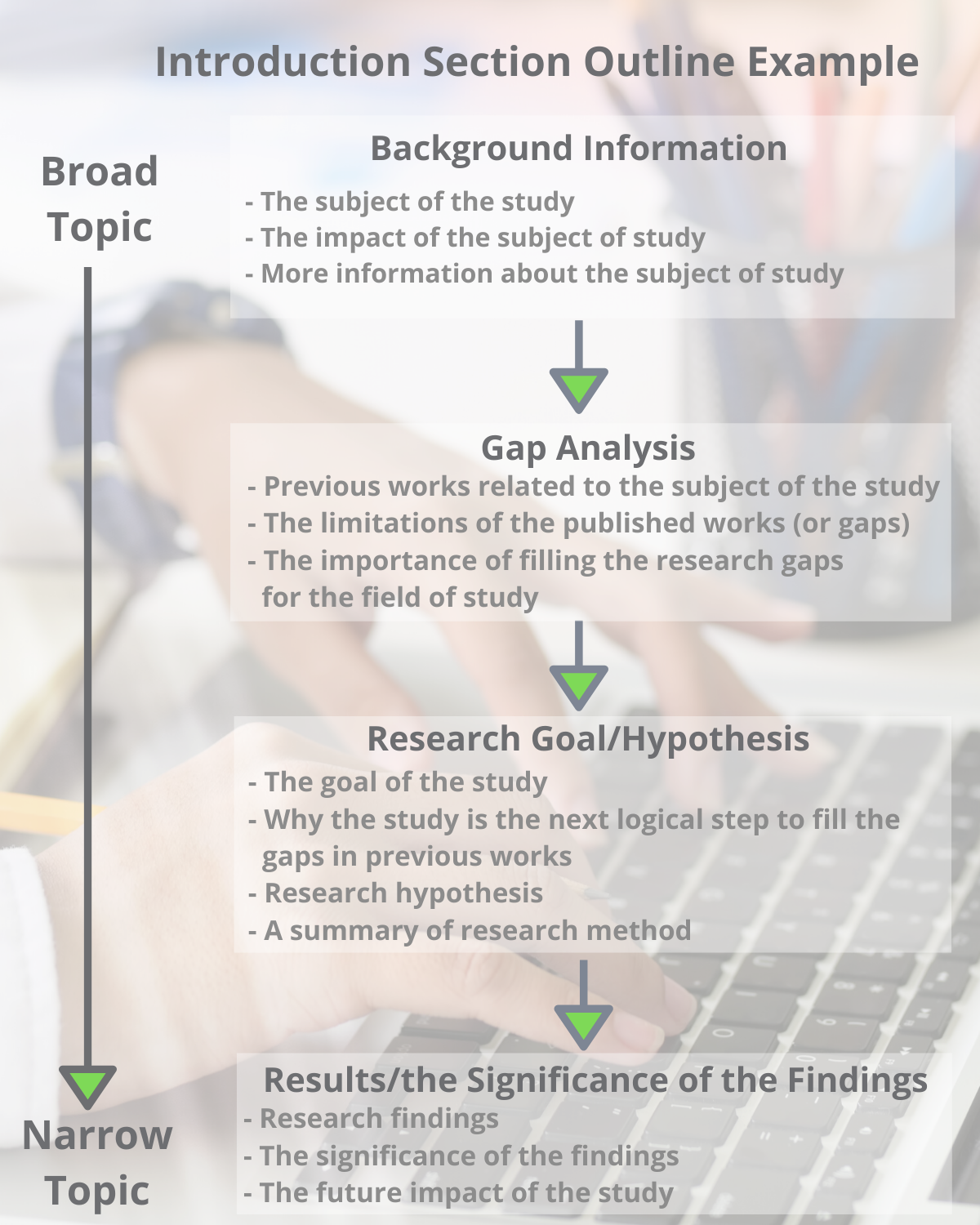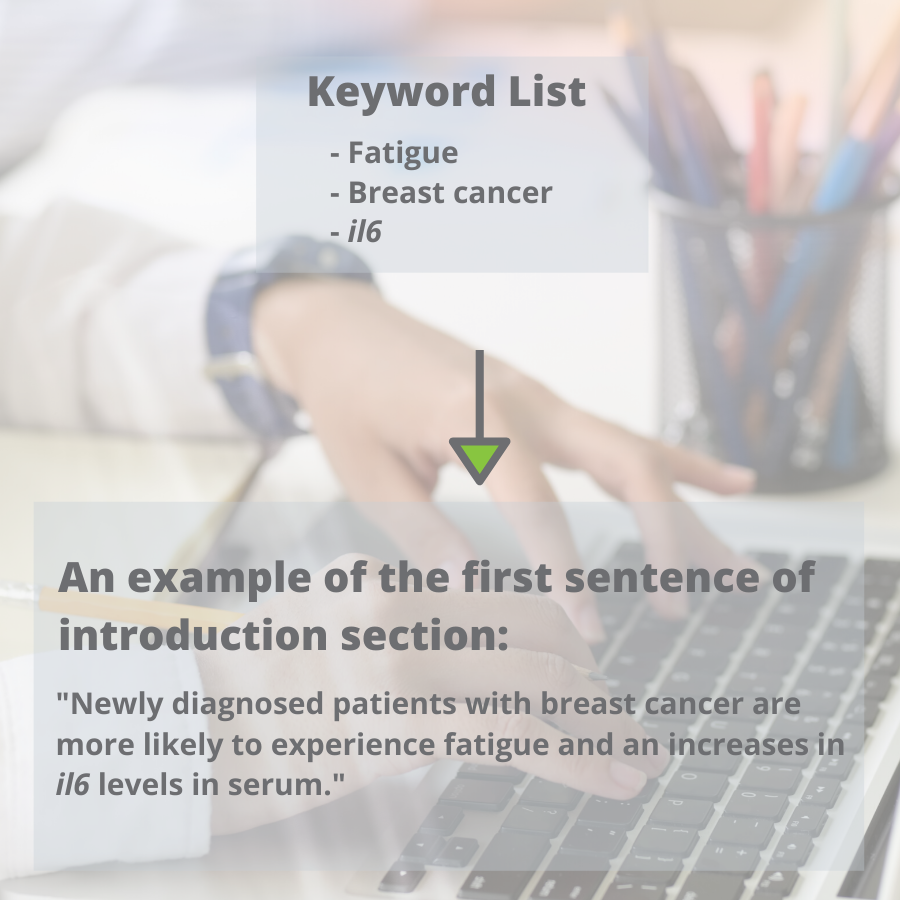How to Write an Effective Introduction Section of a Scientific Article
by Tyasning Kroemer, Ph.D.

by Tyasning Kroemer, Ph.D.
An effective introduction section of a scientific article will form a good first impression by the readers or reviewers. This introduction section contains background information about your research.
For many journals with the IMRAD (introduction, methods, results, and discussion) structure, the purpose of the introduction is to answer these questions:
If the reviewers don’t understand your study and the significant contribution of the research, they are more likely to reject it (Ahlstrom, 2017).
The IMRAD structuring of a scientific manuscript commonly frames the introduction this way (Nadim, 2005):
Familiarize yourself with the introduction of other
published works within your journal of interest before you start writing your
introduction section.
Make sure you have a rough draft of your manuscript with your methods, results and discussions. This draft will guide you when you organize the entire content of your introduction.
Your literature search will help shape a foundation for your introduction. The references that you use in your background information should be relevant to your research topic and up to date. This background information contains all information you need to know about your study.
When searching supplemental literature, try to answer these specific questions:
After you search relevant literature to provide basic information that you need to know about your own research, search more literature to answer broader questions.
For this step, your literature search should be focused on collecting additional background information that your readers need to know. This information will help your readers to understand more about your research.
For this part, try to answer these questions:
The goal on this step is to organize your introduction section by using an outline. Before you start, make sure you check and include commonly used structures of the introduction section for the journal of interest. Use information from your literature reviews to create the background portion of your outline.

To start, list keywords that will be relevant to your first paragraph(s). Keywords are words that represent your research topic and the content of your manuscript. They act like a code, helping readers connect context to commonly used terms.
For example: the name of the human disease and the virus in your study are keywords.
This approach will grab the attention of the readers and help you to focus on your topic. In addition, these keywords will help your paper get entered into various research databases (including Google Scholar).

The purpose of this step is to provide guidance for your readers who are not familiar with your study. Use information gathered from your literature reviews in step 3 and step 2 in the first three sentences of your first paragraph. Also include relevant keywords from step 5.
Readers generally have an expectation that information presented will move from broadly presented to narrowly presented. Consider a funnel as you being writing - broad at the top, and very narrow at the bottom (A. Hofmann, 2013).

Include only important articles related to your research topic in the background. For example, if your study is about a human virus, you may include references about other viruses from the same family that cause human diseases as long as it’s pertinent to your research.
Discuss the earlier research/theoretical framework and how it leads you to your research goal or hypothesis (gap analysis).

For example, mention the
limitations of previously published works. Then write about your
research goal, explain why your research is the next logical step to fill the
gaps in those studies, and briefly state your research hypothesis and methods.
Now you begin your transition from background to your research questions, your methods, justification of your findings and then to the impact of your research.
The purpose of this step is to convince the reviewers that your research is worth publishing by explaining the need, methodology and impact. It also helps readers understand how your work relates to their own or will answer their questions.
This summary should show what you discovered from your results and the significance of your findings. If possible, you may also mention the possible future impact of your research.
Evaluate your entire introduction section. Make sure it follows ‘the funneling of information’. Your paragraphs should start with broader issues then narrow down, and from background information to the impact of your study.
Make sure your introduction section has all the four common components:
1. The background information of the study
2. The reasoning that leads to experimental hypothesis (gap analysis)
3. The goal of the study and research hypothesis
4. The results and the significance of the findings
In addition, read your introduction section again to make sure it is clear and logical.
Ahlstrom, D. (2017). How to publish in academic journals: Writing a strong and organized introduction section. Journal of Eastern European and Central Asian Research (JEECAR), 4(2), 9-9.
Bahadoran, Z., Jeddi, S., Mirmiran, P., & Ghasemi, A. (2018). The Principles of Biomedical Scientific Writing: Introduction. International journal of endocrinology and metabolism, 16(4), e84795-e84795. doi:10.5812/ijem.84795
Borja, A. (2005). 11 steps to structuring a science paper editors will take seriously. Электронный ресурс].–URL: https://www.elsevier.com/connect/11-steps-to-struc....
Farrugia, P., Petrisor, B. A., Farrokhyar, F., & Bhandari, M. (2010). Practical tips for surgical research: Research questions, hypotheses and objectives. Canadian journal of surgery. Journal canadien de chirurgie, 53(4), 278-281.
Hofmann, A. H. (2013). Writing in the biological sciences: A comprehensive resource for scientific communication: Oxford University Press.
Hoogenboom, B. J., & Manske, R. C. (2012). How to write a scientific article. International journal of sports physical therapy, 7(5), 512.
How to Write Guide: Sections of the Paper. (n.d.). Abacus.Bates.Edu. Retrieved May 4, 2020, fromhttps://abacus.bates.edu/~ganderso/biology/resources/writing/HTWsections.html#introduction.
Mack, C. (2014). How to Write a Good Scientific Paper: Structure and Organization. Journal of Micro/ Nanolithography, MEMS, and MOEMS, 13. doi:10.1117/1.JMM.13.4.040101.
Nadim, A. (2005). How to write a scientific paper? . Ain Shams J Obst Gynecol, 2, 256-258.
Scientific Papers | Learn Science at Scitable. (2014). Nature.Com. https://www.nature.com/scitable/topicpage/scientif...
Sollaci, L. B., & Pereira, M. G. (2004). The introduction, methods, results, and discussion (IMRAD) structure: a fifty-year survey. Journal of the Medical Library Association : JMLA, 92(3), 364-367.
Toledo, A. H., Flikkema, R., & Toledo-Pereyra, L. H. (2011). Developing the research hypothesis. Journal of Investigative Surgery, 24(5), 191-194.
Turbek, S. P., Chock, T. M., Donahue, K., Havrilla, C. A., Oliverio, A. M., Polutchko, S. K., . . . Vimercati, L. (2016). Scientific Writing Made Easy: A Step‐by‐Step Guide to Undergraduate Writing in the Biological Sciences. The Bulletin of the Ecological Society of America, 97(4), 417-426.

Ni2+ ions give nickel agarose beads their characteristic blue color. This blue color can fade or disappear completely when loading his-tagged proteins onto the column....

Nickel agarose beads change from blue to a brown or black color when the nickel ions have been reduced from a Ni2+ to a Ni1+...

The GoldBio Floating Tube Rack is one of our more clever giveaways because of the unique purpose it serves. And, with it also being one...

The characteristic blue color of nickel agarose beads comes from the 2+ oxidation state of the nickel ions. Color is also a useful indicator for...
